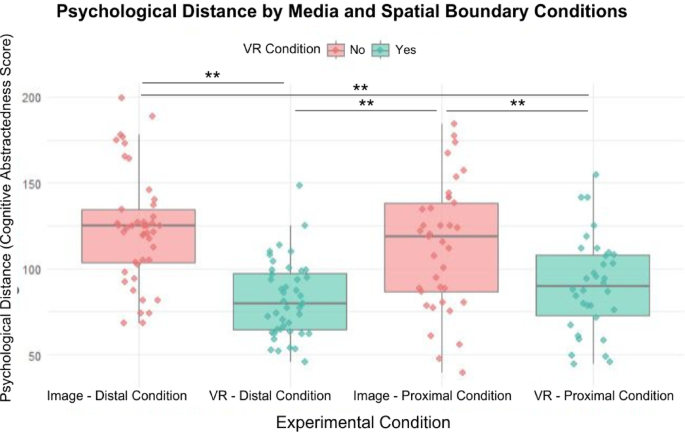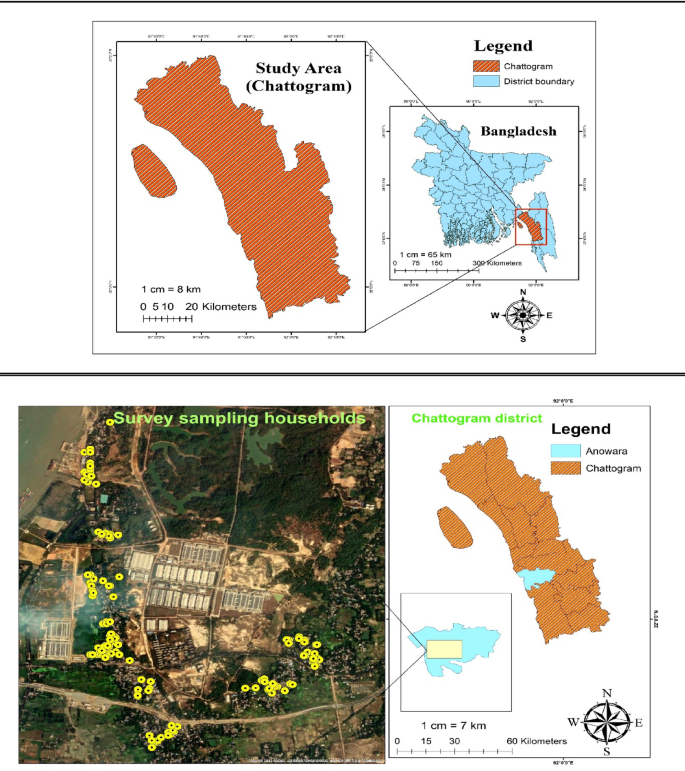Report on the Emergence of Mosquitoes in Iceland and Implications for Sustainable Development Goals
Executive Summary
In October, the first-ever detection of a mosquito population was confirmed in Iceland, a nation historically devoid of the insect. This event, linked to record-breaking summer heat and accelerated glacial melting, highlights the profound impact of climate change on global ecosystems. The emergence of the Culiseta annulata species in Iceland serves as a critical indicator of environmental shifts that directly challenge the achievement of several United Nations Sustainable Development Goals (SDGs), particularly SDG 13 (Climate Action), SDG 3 (Good Health and Well-being), and SDG 15 (Life on Land).
Initial Detection and Species Identification
Chronology of Discovery
- October 16: An insect enthusiast, Bjorn Hjaltason, observed and captured mosquitoes in Kidafell, Kjos, approximately 52km from Reykjavik.
- Specimen Submission: The captured insects were sent to the Natural Science Institute of Iceland for formal analysis.
- Official Confirmation: Entomologist Matthias Alfredsson confirmed the specimens were mosquitoes, marking the first verified instance in the country.
Species Profile: Culiseta annulata
- Origin: Native to the Palearctic ecozone (Europe, North Africa, and parts of Asia).
- Characteristics: A cold-resistant species capable of surviving winter as an adult in sheltered locations.
- Health Impact: While considered a nuisance due to its bite, this species is not currently known to be a vector for human diseases in the region. This aligns with the general observation that mosquito species adapted to cooler climates pose a lower disease risk.
Analysis of Environmental Factors and Linkages to Sustainable Development Goals (SDGs)
SDG 13: Climate Action
The arrival of mosquitoes in Iceland is a direct consequence of failures in global climate action. The nation’s historically inhospitable environment for mosquitoes, characterized by multiple annual freeze-thaw cycles, is changing due to unprecedented warming.
- Record Temperatures: In May, temperatures in Iceland were recorded at 13°C above the 1990-2020 average, a rate significantly higher than the global average.
- Accelerated Glacial Melt: Rising temperatures are causing Iceland’s glaciers to melt rapidly, altering water bodies and creating more stable, stagnant pools suitable for mosquito breeding.
- Ecosystem Shift: Warmer air and water temperatures accelerate mosquito growth, feeding, and reproduction, making previously unsuitable regions viable for colonization. This event serves as a tangible indicator of the widespread ecological disruption caused by climate change.
SDG 3: Good Health and Well-being
While the species found in Iceland is not a known disease carrier, its arrival signals a vulnerability to future introductions of vector-borne diseases. This trend is already being observed globally, posing a direct threat to public health.
- Global Disease Spread: The World Health Organization (WHO) identifies the increase in insect-borne diseases as a major health threat linked to climate change. Warmer conditions are expanding the range of diseases such as dengue, chikungunya, and Zika.
- European Outbreaks: European nations are reporting a rise in mosquito-borne illnesses, with significant local dengue cases in Italy, France, and Spain, and chikungunya cases in France.
- Increased Vector Presence: The discovery of eggs from disease-carrying mosquitoes like Aedes aegypti and Aedes albopictus in the United Kingdom underscores the growing risk across Europe.
SDG 15: Life on Land
The introduction of a new, non-native species disrupts Iceland’s unique terrestrial ecosystem, impacting biodiversity and ecological balance.
- Loss of Unique Status: Iceland has lost its status as one of the few mosquito-free regions on Earth, altering its natural ecological composition.
- Ecosystem Disruption: The presence of mosquitoes can alter the food web, potentially benefiting predators like birds and dragonflies but also introducing the risk of new diseases to local wildlife populations.
- Indicator Species: The changing behavior and distribution of insects like mosquitoes provide critical data for scientists tracking how ecosystems are responding to the pressures of a warming climate.
Conclusion: A Global Warning
The establishment of mosquitoes in Iceland is a significant environmental milestone driven by climate change. It is not an isolated event but part of a global trend where warming temperatures and increased international transport are facilitating the spread of species into new territories. This development directly threatens progress on key Sustainable Development Goals by increasing public health risks (SDG 3), disrupting ecosystems (SDG 15), and demonstrating the severe, tangible consequences of inadequate climate action (SDG 13). The incident underscores the urgent need for enhanced environmental monitoring, public health preparedness, and decisive global action to mitigate climate change.
Analysis of Sustainable Development Goals in the Article
1. Which SDGs are addressed or connected to the issues highlighted in the article?
-
SDG 3: Good Health and Well-being
The article extensively discusses the health risks associated with mosquitoes, particularly the spread of insect-borne diseases like dengue, chikungunya, Zika, and West Nile virus. It highlights the World Health Organization’s (WHO) concern about these diseases as a major health threat linked to climate change and provides examples of rising cases in European countries and Bangladesh.
-
SDG 13: Climate Action
This is a central theme of the article. The appearance of mosquitoes in Iceland is directly linked to climate change, citing “record-breaking heat,” “unprecedented” warming rates, and accelerated “glacial melting.” The article explains how warmer temperatures create more hospitable environments for mosquitoes to breed and for the pathogens they carry to develop, thus connecting climate change directly to ecological and health impacts.
-
SDG 15: Life on Land
The article addresses this goal by focusing on changes to Iceland’s ecosystem. The detection of a new mosquito species (Culiseta annulata) for the first time signifies a change in the country’s biodiversity. The text notes that “a growing number of new insect species are being observed in Iceland due to a warming climate” and that these shifts can impact the ecosystem, affecting predators like bats and birds. This relates to the introduction of new species and the overall health of terrestrial ecosystems.
2. What specific targets under those SDGs can be identified based on the article’s content?
-
Under SDG 3: Good Health and Well-being
-
Target 3.3: By 2030, end the epidemics of AIDS, tuberculosis, malaria and neglected tropical diseases and combat hepatitis, water-borne diseases and other communicable diseases.
The article directly relates to this target by discussing the spread of mosquito-borne communicable diseases such as dengue, chikungunya, and Zika into new regions like Europe. The rising cases in Italy and France and the surge in Bangladesh are evidence of the growing challenge to combat these diseases, which is the focus of this target.
-
Target 3.d: Strengthen the capacity of all countries, in particular developing countries, for early warning, risk reduction and management of national and global health risks.
The article implies the need for this target by quoting an expert who states, “The key is careful monitoring and preparedness to prevent local transmission.” The detection of mosquito eggs in the UK near an airport and at a motorway service station highlights the importance of surveillance systems for early warning of potential health risks.
-
Target 3.3: By 2030, end the epidemics of AIDS, tuberculosis, malaria and neglected tropical diseases and combat hepatitis, water-borne diseases and other communicable diseases.
-
Under SDG 13: Climate Action
-
Target 13.1: Strengthen resilience and adaptive capacity to climate-related hazards and natural disasters in all countries.
The appearance of mosquitoes in Iceland is presented as a direct consequence of a climate-related hazard (warming temperatures). The spread of disease vectors into new areas is a hazard that countries must adapt to. The article shows a lack of resilience in Iceland’s ecosystem, which was previously inhospitable to mosquitoes but is now changing.
-
Target 13.1: Strengthen resilience and adaptive capacity to climate-related hazards and natural disasters in all countries.
-
Under SDG 15: Life on Land
-
Target 15.8: By 2020, introduce measures to prevent the introduction and significantly reduce the impact of invasive alien species on land and water ecosystems and control or eradicate the priority species.
The mosquito species Culiseta annulata is, in the context of Iceland, an alien species. The article states, “It is likely that it was transported by freight,” and notes that a “growing number of new insect species are being observed in Iceland due to a warming climate and increased transportation.” This directly addresses the issue of the introduction of new species into an ecosystem where they were not previously present.
-
Target 15.8: By 2020, introduce measures to prevent the introduction and significantly reduce the impact of invasive alien species on land and water ecosystems and control or eradicate the priority species.
3. Are there any indicators mentioned or implied in the article that can be used to measure progress towards the identified targets?
-
Indicators for SDG 3 (Targets 3.3 and 3.d)
- Incidence of specific communicable diseases: The article provides concrete data that can serve as indicators. These include “more than 200 local dengue cases” in Italy, “500 cases of chikungunya” in France, and a record “12 people died and 740 new people were hospitalised” from dengue in Bangladesh in a single day. Tracking these numbers measures the burden of mosquito-borne diseases.
- Presence of disease vectors: The detection of “the eggs of Aedes aegypti mosquitoes in the United Kingdom for the first time” and “four Aedes albopictus eggs” in Kent are indicators of the expanding geographical range of disease-carrying insects, which is a measure of health risk.
-
Indicators for SDG 13 (Target 13.1)
- Temperature anomalies: The article provides a specific indicator of climate change impact: “In May, temperatures recorded in Iceland were some 13 degrees Celsius (23.4 degrees Fahrenheit) warmer than the 1990-2020 average.” This quantifies the extent of the climate-related hazard.
- Rate of glacial melt: Another indicator mentioned is that Iceland’s glaciers “are projected to lose about half of their volume by 2100,” which serves as a long-term measure of the physical impacts of climate change on the environment.
-
Indicators for SDG 15 (Target 15.8)
- Number of newly detected species: The primary indicator is the “detection of mosquitoes in Iceland for the first time.” The statement that a “growing number of new insect species are being observed in Iceland” implies that tracking the rate of introduction of new species can be used as a measure of ecosystem change and the spread of potentially invasive species.
4. Table of SDGs, Targets, and Indicators
| SDGs | Targets | Indicators |
|---|---|---|
| SDG 3: Good Health and Well-being | Target 3.3: End epidemics of communicable diseases. | Number of local cases of mosquito-borne diseases (e.g., “more than 200 local dengue cases” in Italy; “500 cases of chikungunya” in France). |
| SDG 3: Good Health and Well-being | Target 3.d: Strengthen capacity for early warning and management of health risks. | Geographic presence of disease vectors in new areas (e.g., detection of Aedes aegypti and Aedes albopictus eggs in the UK). |
| SDG 13: Climate Action | Target 13.1: Strengthen resilience and adaptive capacity to climate-related hazards. | Measurement of temperature anomalies (e.g., “temperatures recorded in Iceland were some 13 degrees Celsius warmer than the 1990-2020 average”). Rate of glacial volume loss (e.g., glaciers “projected to lose about half of their volume by 2100”). |
| SDG 15: Life on Land | Target 15.8: Prevent the introduction and reduce the impact of invasive alien species. | Number and rate of new species introductions into an ecosystem (e.g., “Mosquitoes were detected in Iceland for the first time”; “A growing number of new insect species are being observed in Iceland”). |
Source: aljazeera.com






